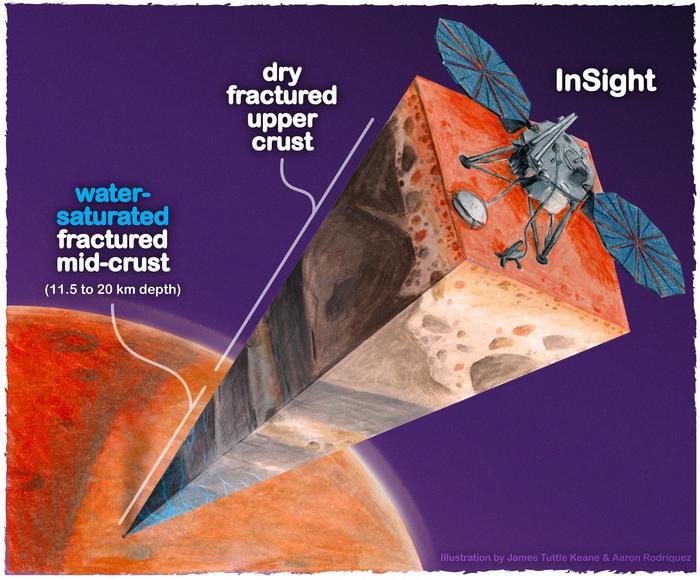Seismic Data Reveals Unexpected Water Reservoir on Mars
A team of geophysicists has uncovered evidence of a massive underground water reservoir on Mars, potentially solving a long-standing mystery about the planet’s vanished oceans. Using seismic data from NASA’s Insight lander, researchers estimate the newly discovered water source could cover the entire Martian surface to a depth of 1-2 kilometers if brought to the surface.
This groundbreaking finding, published in the Proceedings of the National Academy of Sciences, sheds new light on Mars’ geological history and water cycle. The study was led by Vashan Wright, an assistant professor at UC San Diego’s Scripps Institution of Oceanography, in collaboration with colleagues from UC Berkeley.
“Understanding the Martian water cycle is critical for understanding the evolution of the climate, surface and interior,” Wright explained. “A useful starting point is to identify where water is and how much is there.”
The research team used a mathematical model of rock physics, similar to those used on Earth for mapping aquifers and oil fields, to analyze seismic data from the Insight lander. Their analysis suggests the presence of a deep layer of fractured igneous rock saturated with liquid water, located between 11.5 and 20 kilometers below the Martian surface.
Implications for Martian Life and Future Exploration
While the discovery of this vast water reservoir is exciting, its depth poses significant challenges for future Mars missions hoping to access it. Current drilling technology on Earth struggles to reach depths beyond a few kilometers, making this Martian water source effectively out of reach for now.
However, the finding does open up new possibilities for the search for life on Mars. Michael Manga, a UC Berkeley professor of earth and planetary science involved in the study, noted, “I don’t see why [the underground reservoir] is not a habitable environment. It’s certainly true on Earth — deep, deep mines host life, the bottom of the ocean hosts life.”
The research also helps explain what happened to Mars’ ancient surface water, which is believed to have disappeared over 3 billion years ago when the planet lost most of its atmosphere. Rather than escaping into space, it appears much of this water seeped down into the planet’s crust.
Why it matters: This discovery could reshape our understanding of Mars’ potential for harboring life and influence future exploration strategies. It also provides crucial insights into the planet’s geological evolution and water cycle, helping scientists piece together Mars’ complex history.
The study builds on data from NASA’s Insight lander, which operated on Mars from 2018 to 2022. The lander’s seismic measurements have provided unprecedented information about the planet’s interior structure, including details about its crust, mantle, and core.
As researchers continue to analyze the wealth of data from Mars missions, our understanding of the Red Planet’s past and present conditions continues to evolve. This latest discovery underscores the importance of continued exploration and the potential for surprising findings that could reshape our view of our planetary neighbor.

























































